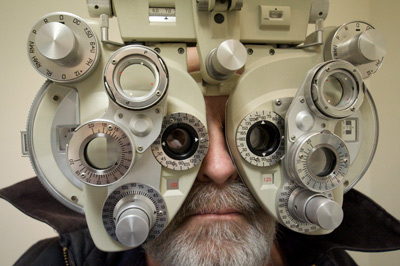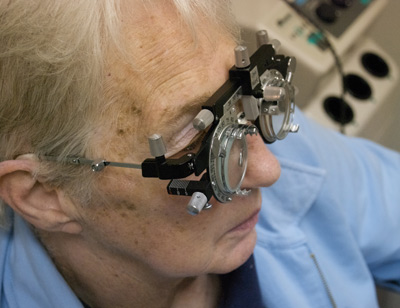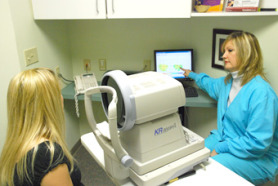Visual Acuity and Low Vision Refraction
 The first step in refining vision is a careful low vision refraction. Measuring the refractive prescription in a low vision patient can be more complex than in patients with good visual acuity. A low vision refraction differs from a routine refraction in that the low vision doctor uses a variety of techniques in an attempt to obtain a more accurate measurements in the visually impaired patient. This may include adjusting the light of the chart up or down to control light and glare issues. T
The first step in refining vision is a careful low vision refraction. Measuring the refractive prescription in a low vision patient can be more complex than in patients with good visual acuity. A low vision refraction differs from a routine refraction in that the low vision doctor uses a variety of techniques in an attempt to obtain a more accurate measurements in the visually impaired patient. This may include adjusting the light of the chart up or down to control light and glare issues. T he doctor may fog one eye with lenses rather than totally occlude the eye while testing the other to avoid increases in latent nystagmus caused by totally occluding the opposite eye. High contrast filters may be applied during testing to enhance contrast. A trial frame may be used to allow the patient to shift fixation to move any central blindspots to the side, a task called eccentric fixation.
he doctor may fog one eye with lenses rather than totally occlude the eye while testing the other to avoid increases in latent nystagmus caused by totally occluding the opposite eye. High contrast filters may be applied during testing to enhance contrast. A trial frame may be used to allow the patient to shift fixation to move any central blindspots to the side, a task called eccentric fixation.
Low vision acuity charts cover a wide range of letter sizes. This allows the low vision specialist to refine even small changes. Standard charts run from 20/400 to 20/20. Low vision charts not only may run from 20/2000 to 20/20 but have more separate lines in the crucial range of 20/80 to 20/200 (20/100. 20/120, 20/140,20/160/20/20/200).
 Autorefractors and retinoscopy are methods of measuring the refractive prescription without the patient having to respond. Computerized autorefractors use infrared light to measure the prescription of the eye. It allows the doctor to better refine the prescription in patients who may find vision tests very difficult due to their vision loss.
Autorefractors and retinoscopy are methods of measuring the refractive prescription without the patient having to respond. Computerized autorefractors use infrared light to measure the prescription of the eye. It allows the doctor to better refine the prescription in patients who may find vision tests very difficult due to their vision loss.
The use of corneal topography and keratometry allows us to measure the shape of the cornea and predict the amount of astigmatism we expect to find. All of these techniques help us refine the prescription in the low vision patient.
The results of the refraction are critical because in some patients obtaining a slightly better visual acuity by changing the eyewear prescription might allow them to be considered for a restricted license rather than requiring the use of bioptics. In Indiana, 20/80 acuity in one eye in an experienced driver would allow the patient to be considered for a restricted license after a BMV behind-the-wheel test.
